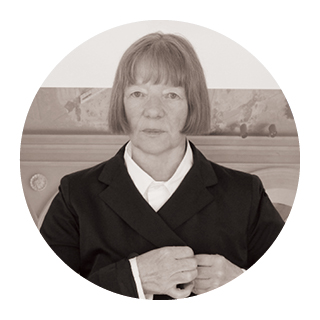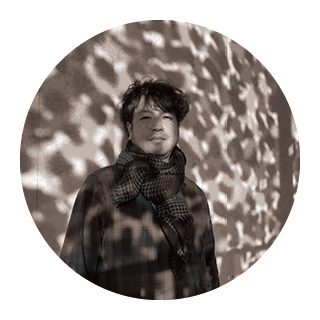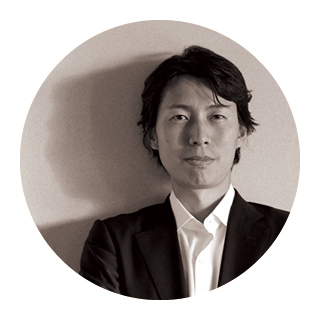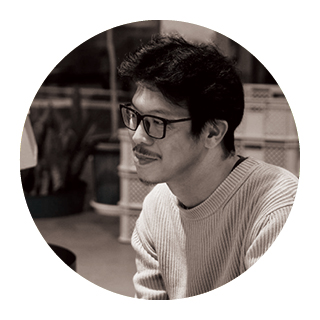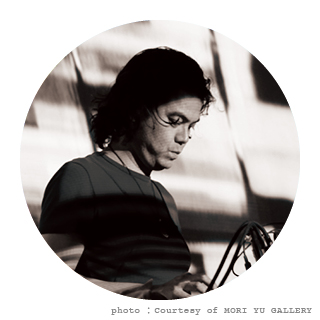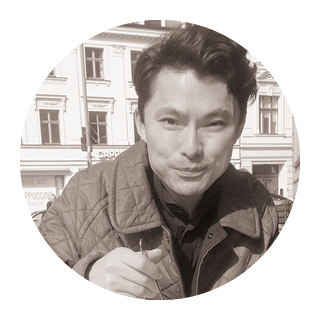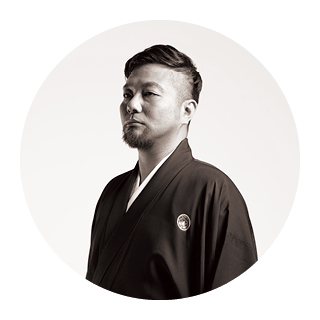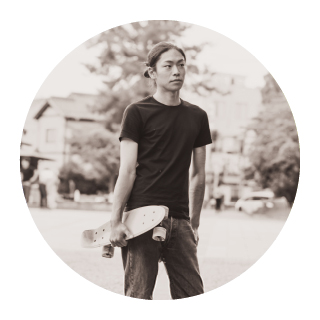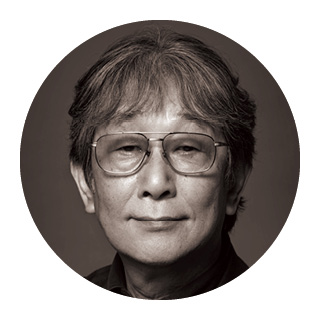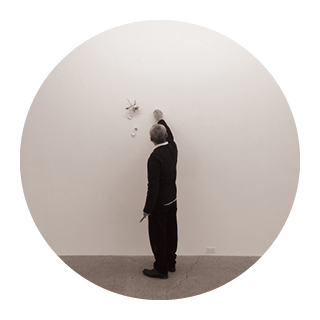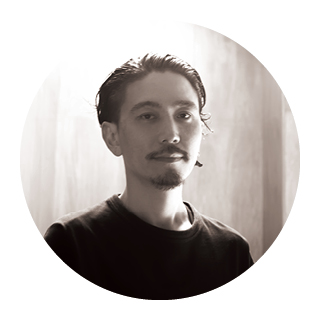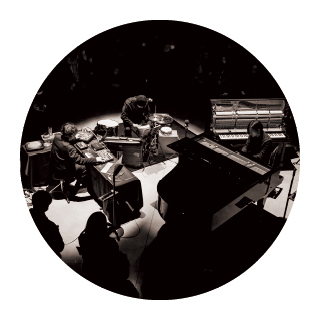
宇佐美雅浩
Masahiro Usami1972年、千葉県千葉市生まれ。1997年、武蔵野美術大学 視覚伝達デザイン学科卒業。東京在住。
様々な地域や立場におかれた人々とその人物の世界を表現するものや人々を周囲に配置し、仏教絵画の曼荼羅のごとく1枚の写真に収める「Manda-la」プロジェクトを大学在学中から20年以上続けている。
近年の主な展覧会に、「Manda-la in Sado」(2022 さどの島銀河芸術祭2022、新潟)、「千の葉の芸術祭:CHIBA FOTO」(2021 千葉)、「I Say Yesterday, You Hear Tomorrow. Visits from Japan」(2018 Gallerie delle Prigioni、トレヴィーゾ、イタリア)、「Manda-la in Cyprus」(Pafos2017、キプロス/ミヅマアートギャラリー、東京)、「黄金町バザール2017:他者と出会うための複数の方法」(2017 黄金町エリア、神奈川)、「ART JOG 10:Changing Perspective」(2017 ジョグジャカルタ国立博物館)、「大邱フォトビエンナーレ」(2016 Daegu Culture & Arts Center、韓国)などがある。
Born in 1972 in Chiba City, Chiba Prefecture. In 1997, he graduated from Musashino Art University, Department of Visual Communication Design. Lives and works in Tokyo.
He has been working on the “Manda-la” project since more than 20 years ago as art student, in which objects and people representing the world of people from various regions and positions are placed around him, captured in a single photograph like a mandala in a Buddhist painting.
Some of Usami’s recent major exhibits include “Manda-la in Sado” (Sado Island Galaxy Art Festival, Niigata, 2022), “The Chiba City Festival of Arts: CHIBA FOTO” (Chiba City, 2021), “I Say Yesterday, You Hear Tomorrow. Visits from Japan”, (Gallerie delle Prigioni, Treviso, Italy, 2018), “Manda-la in Cyprus” (Pafos 2017, Cyprus, 2017 & Mizuma Art Gallery, Tokyo, 2018), “Koganecho Bazzar 2017: Double Façade” (Under the elevated Kogane Studio and others, Kanagawa, 2017), “ART JOG 10:Changing Perspective”, (Jogja National Museum, Yogyakarta, Indonesia, 2017), “Daegu Photo Biennale” (Daegu Culture & Arts Center, Korea, 2016), etc.
作品タイトル
曼荼羅
Manda-la
ステートメント
この一枚の写真は、中心にいる人物の世界を表現している。
ただ、知ってほしいのは撮影時のシャッタースピードが1/125秒だとしても、この撮影にいたるまでの交渉のスピードは平均して2年から3年。合成ではない。
写真に参加する人々の意思を動かすために時間がかかるのである。
その人物と繋がりのある人や物を実際にならべて撮影しているこの作品は、被写体のバックグランドを表現した「一個人の曼荼羅」というだけでなく、地域ごとのソーシャルなメッセージさえも伝える事のできる写真を目指している。
曼荼羅はサンスクリット語で、mandalaといい、本質を意味するmandaと、所有を表すlaを合成した言葉である。
「本質を図解する物の」意味。(日本大百科全書より)
Noteworthy is the fact that although the shutter speed at the moment the photograph is taken may be 1/125th of a second, the length of the negotiations to arrive at taking the picture is on average two to three years. It’s not the composition. Time staking is the gathering and motivating the participants.
All the main characters, people and objects related in real-life are arranged together and photographed. The work not only aims to express the background of the photographic subject – the individual’s mandala, but also to make photographs that function as media communicating the social message of the very place itself.
Mandala is a compound word in Sanskrit made up of the term for ‘truth’ or ‘reality’ (manda) and the term la, which denotes personal possession.
It means ‘of things that illustrate the essence of things’. [Encyclopedia Nipponica]
《早志百合子 広島 2014》
広島を象徴する人物に選ばれたのは、被爆者で、原爆体験記集「原爆の子」の執筆者の会「きょう竹会」の会長、早志百合子さん。奇跡的に命をとりとめ、健康体操の先生として現在も活躍する早志さんは、被爆体験を後世に伝える使命を感じている。その早志さんを中心に、画面右は原爆投下時の、広島の姿が描かれている。総勢500名がボランティアで参加したダイ・イン。その中には、原爆投下時の早志さん一家の姿、きのこ雲、原爆ドームの近くの川で拾い集められた原爆瓦、黒い雨をイメージする黒い傘が配置。一方、左側には、未来を担う赤ん坊たち、広島の復興と深い関わりのある広島カープのキャラクター・スライリー、現在の早志さんのご家族、お孫さんたちが食卓を囲む姿が描かれている。早志さんは、作品の中央、過去と現在の中間に穏やかに腰をかけている。その間の時間と歴史を想うとき、人間の逞しさや尊厳を感じずにはいられない。原爆投下後、75年は草木もはえぬと言われていた、全てを失った広島の地に、1ヶ月後に花を咲かせたカンナの花が、力強く咲いている。広島市民4世代が、後世に原爆体験を伝えようと思いを一つにした一枚。
《Hayashi Yuriko, Hiroshima 2014》
The person chosen as a symbol of Hiroshima was Yuriko Hayashi, an atomic bomb survivor and president of the Kyochikukai, a group of authors of the atomic bomb memoirs “Children of the Atomic Bomb.” Ms. Hayashi, who miraculously survived and is still active as a health gymnastics teacher, feels a mission to pass on her experience of the atomic bombing to future generations. Centered on Mr. Hayashi, the right side of the picture depicts the appearance of Hiroshima at the time of the atomic bombing. A total of 500 people volunteered to participate in the die-in. Among them are the image of the Hayashi family at the time of the atomic bombing, a mushroom cloud, atomic bomb tiles collected in the river near the Atomic Bomb Dome, and a black umbrella that resembles black rain. On the other hand, on the left, the babies who will lead the future, the Hiroshima Carp character Slyly, who is deeply involved in the reconstruction of Hiroshima, and the current family and grandchildren of Mr. Hayashi are depicted around the dinner table. Hayashi sits peacefully in the center of the work, halfway between the past and the present. When thinking of the time and history that has been in between, one cannot help but feel the resilience and dignity of human beings. In Hiroshima, where everything was lost, which was said to be incapable of growing vegetation for 75 years after the atomic bombing, the canna flowers that bloomed one month later are blooming powerfully. Four generations of Hiroshima citizens united in their desire to pass on the experience of the atomic bomb to future generations.
《大塚健 秋葉原(東京) 2013》
執事カフェ、同人誌コミックのお店など、秋葉原のオタク文化を支える事業を数多く行い、現在年商約60億円というK-bookを一代で築いた経営者・大塚健さんを中心に撮影。実は、人工呼吸器がないと呼吸ができないという症状をもつ、筋ジストロフィーという難病を抱える大塚さん。寝たきりで声を出すことも困難な中で、ご家族が大塚さんのアイデアを聞き取り、様々な事業を具現化させてきたという。中心には大塚さんと会議の風景を、その周りには、家族、コスプレイヤーや秋葉原を中心に活動するアイドル、カフェのメイドや執事たち、常連客たち、痛車と呼ばれるカスタムカーが取り囲む。警察や自治 体に交渉し、奇跡的に朝7時の秋葉原の路上での撮影が成功した。東日本大震災後の作品。一見、コミカルに見えるかもしれないが、被災地には様々なものを無くし、失望にかられている人々が多くいると思うが、大塚さんは、アイデアひとつでここまで夢をかなえることができた人。どんな逆境があっても人間はその困難を乗り越えられるという、メッセージを被災者の方達に届けたいとの思いを宇佐美が込めた作品。
《大塚健 秋葉原(東京) 2013》
The film focuses on Ken Otsuka, the owner of a butler café, a doujinshi comic shop, and many other businesses that support Akihabara’s otaku culture, and who built a K-book with annual sales of about 6 billion yen in a single generation. Mr. Otsuka has an incurable disease called muscular dystrophy, which is a symptom that makes it impossible to breathe without a ventilator. Although he was bedridden and had difficulty speaking out, his family listened to his ideas and realized various projects. In the center is the scene of Otsuka-san and the meeting, and around it are his family, cosplayers, idols active mainly in Akihabara, café maids and butlers, patrons, and a custom car called a ‘paincar’. After negotiating with the police and the local government, the the work was miraculously completed on the streets of Akihabara at 7 a.m. These Works after the Great East Japan Earthquake may seem comical at first glance, but there are many people in the disaster-hit area who have lost various things and are disappointed. Mr. Otsuka is a person who was able to make his dream come true with just one idea. Usami’s work expresses the desire to deliver the message that human beings can overcome difficulties no matter what kind of adversity they face, to the people affected by the disaster.
《世阿弥 佐渡 2022》
佐渡島は歴史上流刑の島として一般的に知られている。一方で、佐渡島に位置する金銀山は江戸幕府の経済を支え、その豊かな経済発展のもとに様々な文化が集まってきた土地である。 中世まで続いた流罪によって行き着いた文人や知識人が都の文化を伝えた影響もまた、さまざまな伝統芸能を佐渡に息づかせた。能を代表する世阿弥もまた配流された人物である。今回は、故人ではあるが世阿弥を中心に佐渡の文化、芸能、自然、現代の人々が生きる様を表現する。具体的には稲穂の実った海から続く金色の棚田の上を、様々な伝 統芸能(鬼太鼓、浄瑠璃、のろま人形、獅子舞など)を受け継ぐ人々が、帆をあげた船に乗って上陸してくる様を作り込んで表現する。中心には、世阿弥に扮した能の指導者が、次の世代に伝統を伝えるための舞を弟子たちと演じている。 佐渡は、多くの文化が宝船に乗って運ばれてきた島なのだ。
《Zeami, Sado 2022》
Sado Island is generally known as the island of exile in history. On the other hand, the gold and silver mines located on Sado Island supported the economy of the Edo shogunate, and various cultures gathered under its rich economic development. The influence of literati and intellectuals who had been exiled until the Middle Ages to pass on the culture of the capital also brought a variety of traditional performing arts to Sado. Zeami, a representative of Noh, is also a person who was sent to the island. This time, although he is deceased, Zeami will focus on Sado’s culture, performing arts, nature, and modern people. Specifically, on the golden rice terraces that continue from the sea of rice ears, people who have inherited various traditional performing arts (demon drums, jōruri, noroma dolls, lion dances, etc.) are created and depicted as people coming ashore on a boat with sails. In the center, a Noh instructor dressed as Zeami performs a dance with his disciples to pass on the tradition to the next generation. Sado is an island where many cultures have been transported on treasure ships.
《マンダラ・イン・キプロス 2017》
1974年のクーデター以降、南(ギリシャ系キプロス)と北(トルコ系キプロス)に分断されているキプロス。その未来への希望を込め、一つになろうとする様子を描いた。両地域の子供と兵士たちが花を並べ、一つになった未来のキプロスの地図を作っている。その背景には、現在、南北を分断しているグリーンラインを象徴するドラム缶でボーダーを再現。ギリシャ系とトルコ系、それぞれのコミュニティーの人々が、壁をはさんでお互いの宗教(ギリシャ正教、イスラム教)の祈りのポーズをし、平和を願っている。全員に同じ衣装を着てもらうことで、元々は同じ地域に住む隣人同士だったことを示した。羊の群れと、昔ながらのはた織り機で布を作り上げていく場面に、この国の伝統的な繊維産業を表現した。よく見ると、ドラム缶の上に猫がいる。猫だけは、現在もパスポートなしでボーダーを行き来できるのだ。お互いの宗教を尊重しあい、キリスト教圏とイスラム教圏の人々が共に未来の統合に向けて平和を願う姿は、キプロスだけではなく世界に向けての願いでもある。
※ここでの北側のイスラム教のポーズは、一般によく知られている、ひざまずいて行う礼拝のポーズではなく、ドゥアーと呼ばれる祈願の様子だ。歴史的な背景から、一般的にトルコ系キプロス人は無宗教に近い人が多いものの、現在でもお葬式の儀式はイスラム教に則った形で執り行われている。南側では、一般的にギリシャ正教の熱心な 信仰者が多く、国の行事すべてに大きな影響が見られる。ここでのギリシャ系キプロス人のポーズは、祈祷の際などにとる十字を描く様子である。
《Manda-la in Cyprus 2017》
Since the 1974 coup d’état, Cyprus has been divided into the south (Greek Cyprus) and the north (Turkish Cyprus). It depicts the hope for the future and the attempt to become one. Children and soldiers from both regions are arranging flowers and creating a map of the future Cyprus as one. In the background, the border is reproduced with a drum that symbolizes the Green Line, which currently divides North and South. People from different communities, Greek and Turkish, pray for peace by posing in prayer of each other’s religions (Greek Orthodox and Muslim) on the other side of the wall. By having everyone wear the same costume, they showed that they were originally neighbors living in the same area. The scenes of a flock of sheep and the weaving of cloth on an old-fashioned weaving loom represent the country’s traditional textile industry. If you look closely, you can see a cat on a drum. Only cats can still travel to and from the border without a passport. Respecting each other’s religions and wishing for peace for the future unification of the people of Christian and Muslim countries is a wish not only for Cyprus, but also for the world.
※The Islamic pose on the north side here is not the well-known kneeling prayer pose, but a prayer called a dua. Due to historical background, many Turkic Cypriots are generally non-religious, but funeral ceremonies are still held in accordance with Islam. In the south, there are generally many devout followers of the Greek Orthodox Church, which has a great influence on all national events.The pose of the Greek-Cypriot here is that of a cross taken during prayer.
展示作品
《早志百合子 広島 2014》タイプCプリント、120×152 cm
《大塚健 秋葉原(東京) 2013》タイプCプリント、120×152 cm
《世阿弥 佐渡 2022》インクジェットプリント、120×163 cm
《マンダラ・イン・キプロス 2017》インクジェットプリント、150×200 cm
《猫 #1 南側 2017》インクジェットプリント、30×40 cm
《猫 #2 北側 2017》インクジェットプリント、30×40 cm
《猫 #2 南側 2017》インクジェットプリント、60×80 cm
《猫 #4 北側 2017》インクジェットプリント、60×80 cm
《猫 #3 南側 2017》インクジェットプリント、120×150 cm
《猫 #3 北側 2017》インクジェットプリント、120×150 cm
《Hayashi Yuriko, Hiroshima 2014》c-type print, 120×152 cm
《Otsuka Ken, Akihabara, Tokyo 2013》c-type print, 120×152 cm
《Zeami, Sado 2022》Inkjet print, 120×163 cm
《Manda-la in Cyprus 2017》inkjet print, 150×200 cm
《Cat #1 Southern part 2017》inkjet print, 30×40 cm
《Cat #2 Northern part 2017》inkjet print, 30×40 cm
《Cat #2 Southern part 2017》inkjet print, 60×80 cm
《Cat #4 Northern part 2017》inkjet print, 60×80 cm
《Cat #3 Southern part 2017》inkjet print, 120×150 cm
《Cat #3 Northern part 2017》inkjet print, 120×150 cm
